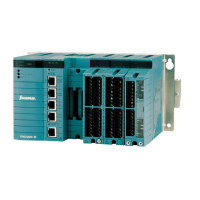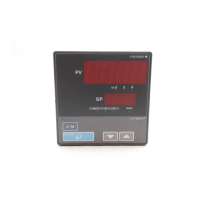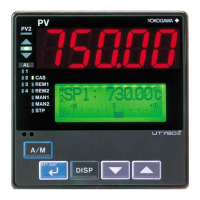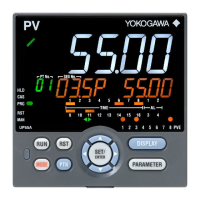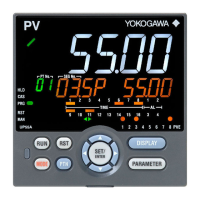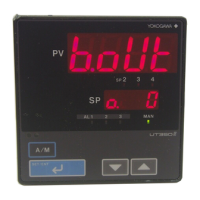IM 04L20A01-01E
1-9
1
Explanation of Functions
• Delay upper limit alarm (T)
An alarm occurs when the measured value remains above the alarm value for the
specified time period (delay period).
• Delay lower limit alarm (t)
An alarm occurs when the measured value remains below the alarm value for the
specified time period (delay period).
Alarm releaseAlarm occurrence
T
X1 X2 X3 X4
T1
Measured/computed data
Alarm value
Delay upper limit alarm example (“T” is the specified delay period)
• Alarm does not occur at T1, because the time period is shorter than the specified
delay period (T).
• The input exceeds the alarm value at X2, but the alarm occurs at X3 at which the
specified delay period elapses (the time when the alarm occurs is the time at X3).
• The input falls below the alarm value at X4 and the alarm is released.
Note
The following special operations are available for the delay upper/lower limit alarm.
• When a delay alarm is set on a computation channel (/M1, /PM1 option) and the
computation is stopped
If the computation is stopped in a condition in which the computed value is exceeding the
alarm setting, the alarm is turned ON after the specified period (delay period) elapses.
Alarm turns ON
T
Computed data
Computation stopped
Alarm value
• Delay alarm when a power failure occurs
Alarm detection is reset upon a power failure. It restarts the operation after the power
recovers.
Power failure
occurence/recovery
Power failure
occurence/recovery
T
TT
Alarm : Off On Off On Off On Off
Measured/computed data
Alarm value
• Operation when the alarm setting is changed
• When a new delay alarm is set
The alarm detection starts at the time the alarm is set. It is unaffected by the conditions
existing before the alarm is set.
• If the alarm setting of a preexisting delay alarm is changed
• If an alarm is not occurring at the time of the change, alarm detection starts at the new
setting.
• If an alarm is occurring at the time of the change and the alarm type is set to delay
upper limit alarm, the alarm continues as long as the input is above or equal to the new
setting. If the input is below the new setting, the alarm turns OFF. If the alarm type is
set to delay lower limit alarm, the alarm continues as long as the input is below or equal
to the new setting. If the input is greater than the new setting, the alarm turns OFF.
1.3 Alarm Function

